Buildings
About
In Florida, we don't always need a full garage to protect our vehicles. We prefer to keep our cars out of the sun and rain, but since we don't deal with snow, walls are nice, but not required. Therefore, many homes built after the 1920s, when cars became commonplace, have integral carports as part of the design in Florida, even when they also have a detached garage.

Mission style residence designed with an integral carport built in the 1920s.

Bungalow with integral carport built in the 1920s with a detached garage to the rear.

Historic detached carport for a bungalow. This one has storage built in along the side.
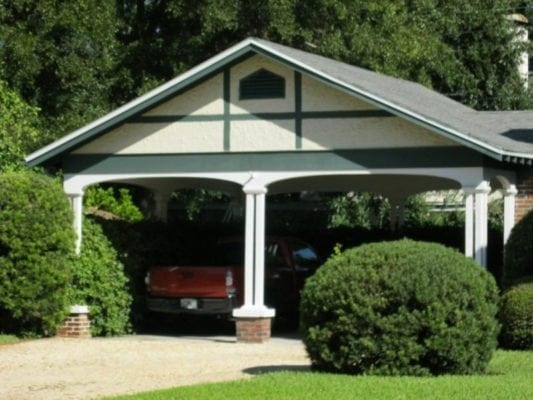
Detached carport at a Tudor style home in Tampa.
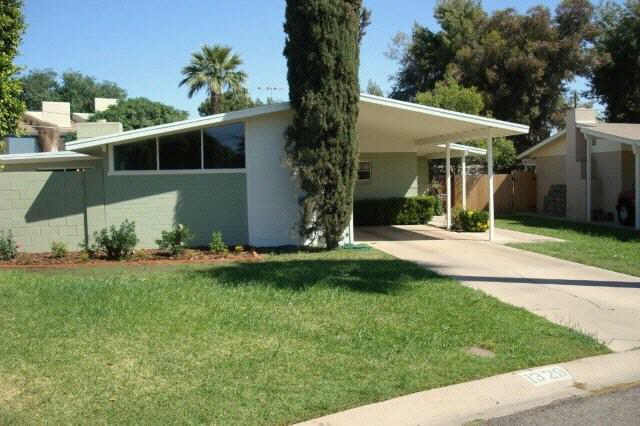
Integral carport on a Mid Century Modern home
Other Florida homes have a detached carport design that is easy to add to any historic home property. These designs date from the 1880s through today, with elements from Craftsman Bungalows, Colonial Revival, and Mid-Century Modern all used to make unique and useful structures.
Detached simple gable car port for a bungalow found in Tampa.
Detached car port with triple columns for a Minimal Traditional home located in Tampa.
Historic Shed can custom design a detached car port to complement your historic home to protect your car and enhance your yard. Each design can incorporate details from the main house, using traditional materials and design elements that will look right at home at your historic property. These structures can double as entertainment pavilions as well for special occasions.
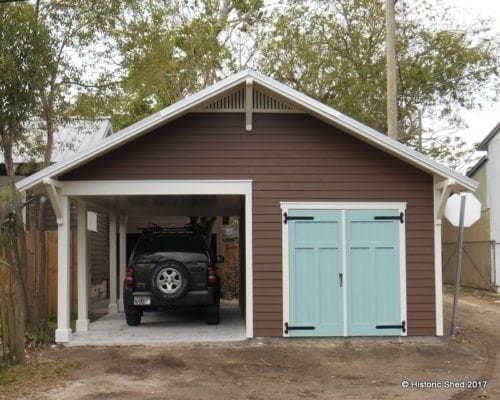
Carport designed and built by Historic Shed in St. Augustine.
Some various carport/ storage options that may work for you:
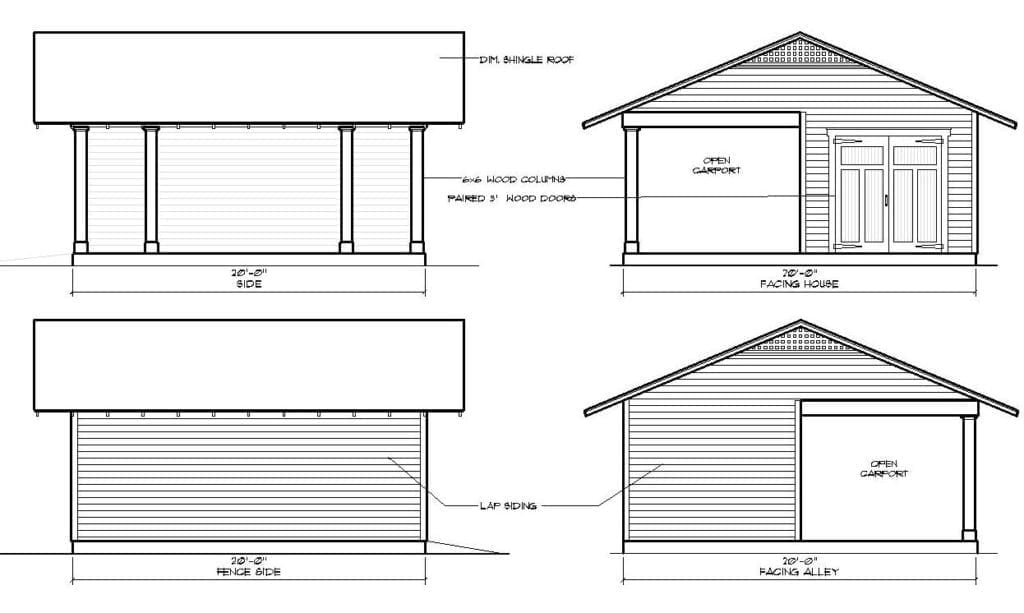
Front gable single car carport with side storage
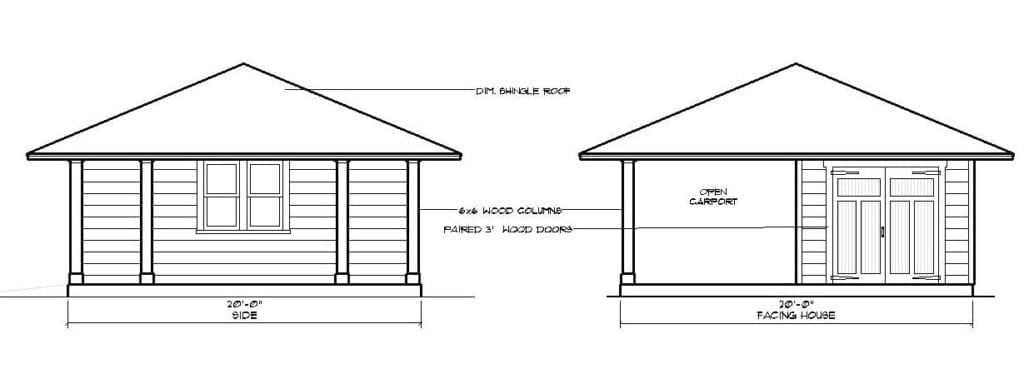
Hipped roof single car carport with side storage
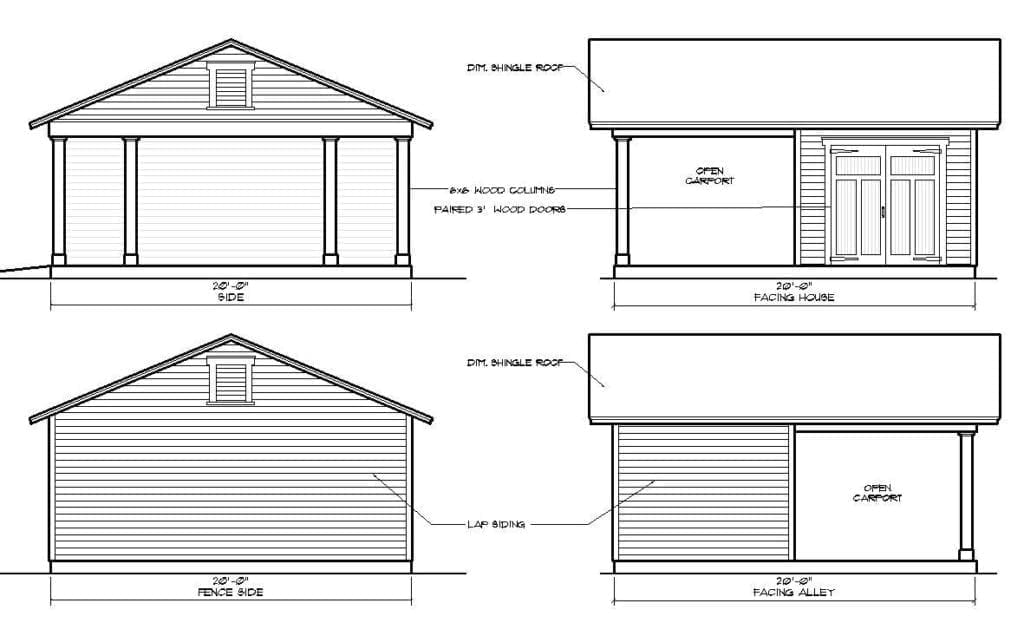
Side Gable single car carport with side storage
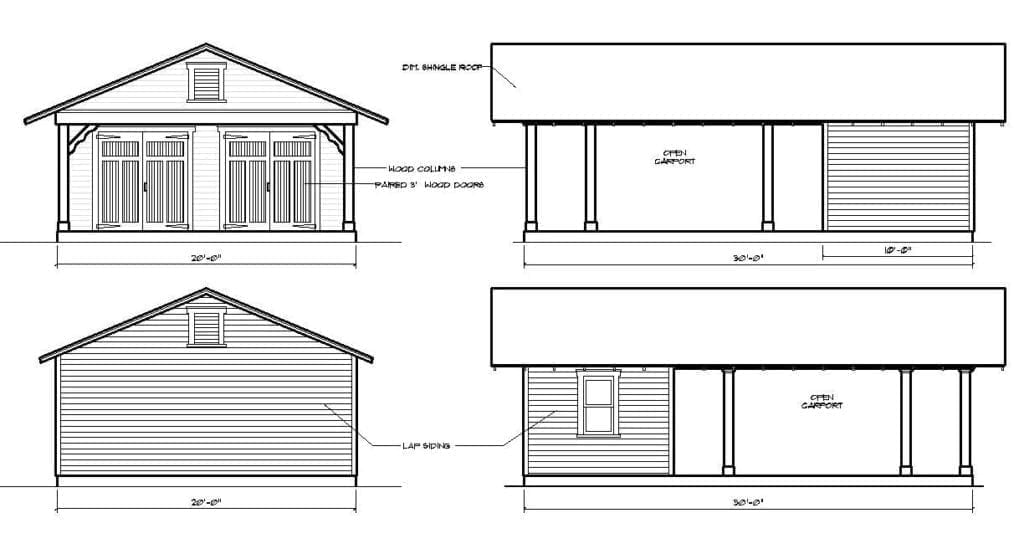
Gable two-car carport with storage to the rear
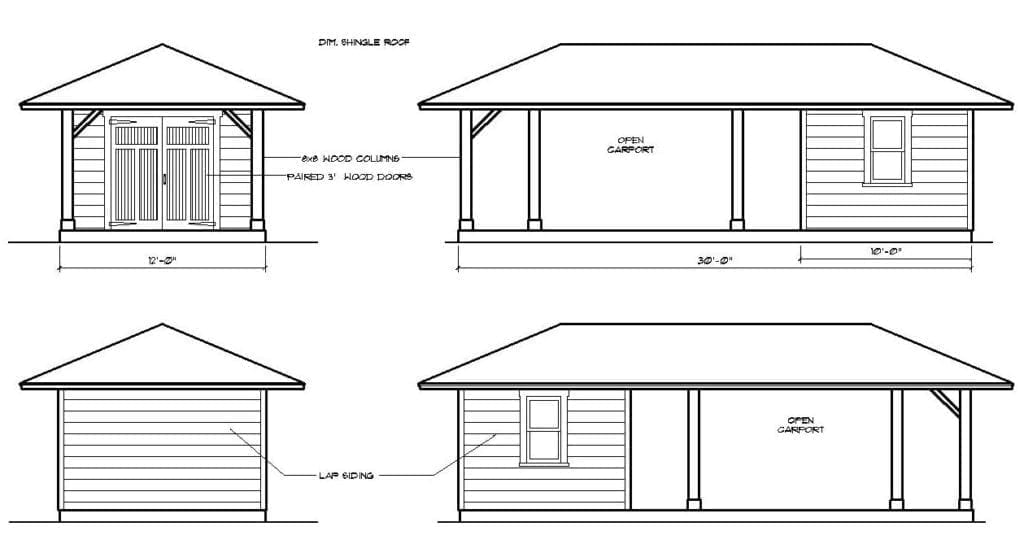
Hipped roof single car carport with storage to the rear
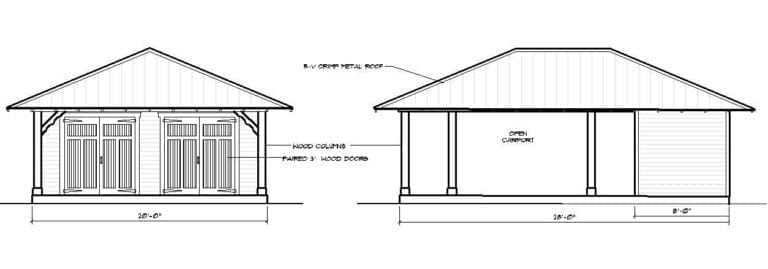
Hipped roof two-car carport with storage to the rear
My topic at the recent Historic Homes Workshop in St. Petersburg was on choosing exterior paint colors for historic Florida homes (it seemed more fitting to the theme of the workshop than "History of Outbuildings"). Below is the slide presentation that was used as a background for the talk. Unfortunately it doesn't have my witty delivery along with the slides, but I am available to give the presentation to neighborhood associations and other local groups that are interested in the topic. Or you can email for clarification on any of the slide information.
(Click on the four arrows in the lower right corner to see the slides at full size.)
Choosing Exterior Colors for your Historic Florida House
View more presentations from Preservation Resource, Inc./ Historic Shed
Our ten-year old son made this video for us. We're rather proud!
Historic homes have plenty of charm and character, but are often short on space. This is especially true when company arrives. Ybor City resident Judy Greer has found an affordable solution to that problem: she is installing a guest cottage behind her home. Designed and built by Historic Shed, a Brooksville-based outbuilding specialty company, the cottage complements her historic home and adds to the neighborhood character. The cottage has a bedroom and full bath, and is roughly the size of a typical hotel room.

Construction of a detached building was a less expensive alternative to building an addition to her home. Moreover, there was no construction inconvenience since all the work took place in her back yard, without disturbing her house. “My guests will be comfortable and I’ll keep my privacy,” say Ms. Greer. “It’s the perfect set-up. My neighbor is considering something similar for her mother-in law.”
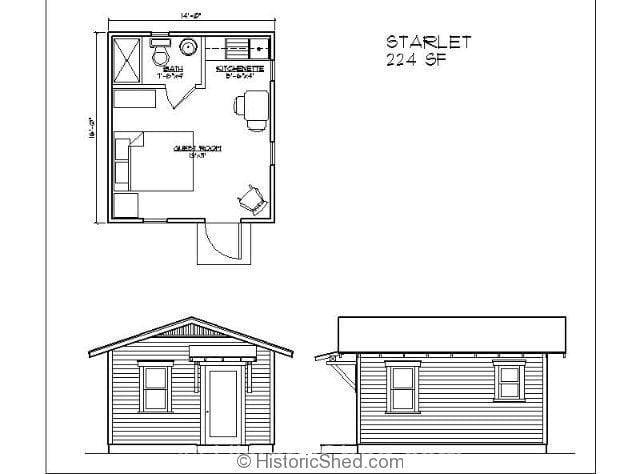
The Greer Cottage was an adaptation of the 224 sf Starlet Guest Cottage
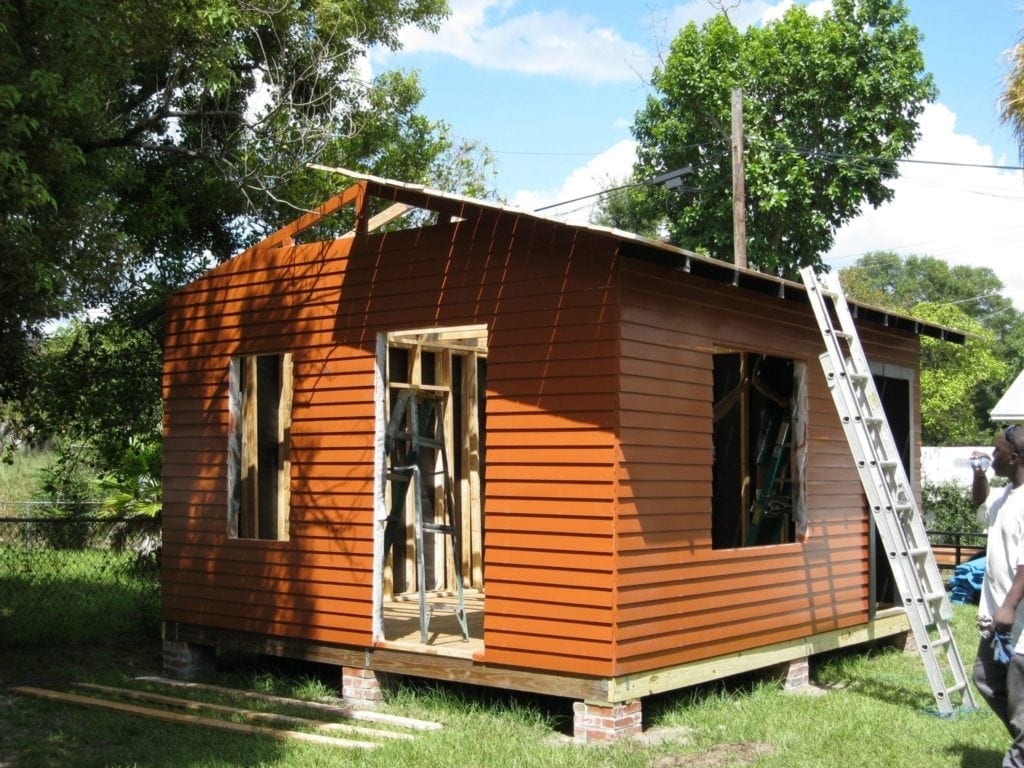
Cottage under construction
Historic Shed designs and builds outbuildings for historic homes, from simple garden sheds, to garages, to cottages like Ms. Greer’s. The custom designs incorporate architectural elements from existing historic homes and use traditional materials and detailing. Historic preservation consultant, Jo-Anne Peck and her contractor husband, Craig DeRoin began building Historic Shed outbuildings in 2008 to fill a void in the market for historic homeowners. “Many historic homeowners don’t want a stock metal or vinyl shed in their backyard, and in many cases they are actually prohibited by local historic district design guidelines,” says Ms. Peck. “We also get many calls from owners of newer homes who just want an attractive backyard building.”
Each Historic Shed outbuilding is constructed in a warehouse, broken back down into individual walls and roof for delivery, and then reassembled on site. Installation typically takes 2-3 days for garden sheds and two or more weeks for a more complex structure such as the cottage due to coordination with electrical and plumbing contractors. For more information, see the website at HistoricShed.com.

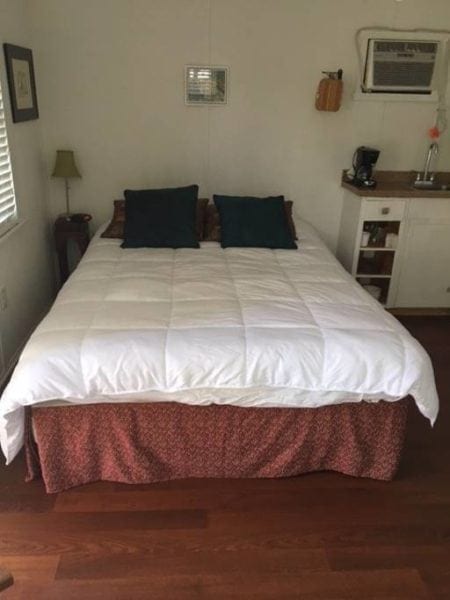

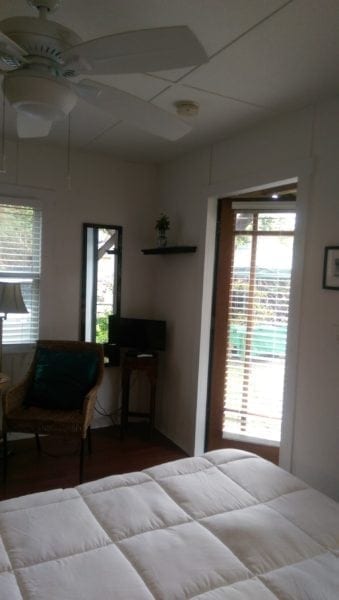
We have a lot of people in love with our shed designs, but because we use high-end materials, they don't always fit into everyone's budget. So, we've spent some serious time discussing how we can create a more economical design without compromising the charm, detailing and longevity of our product. A shed with faux board and batten siding was one of our design solutions, using pressure treated plywood to simulate the board siding and then applying cypress battens for a finished look. This would reduce both material and labor costs, but when detailed properly, still looks appropriate behind historic homes.
 Board and batten is a traditional historic siding that originated in Norway and Sweden. It was popularized in the United States by Andrew Jackson Downing in the mid 1800s in his picturesque residential designs. The siding was commonly used in Florida for outbuildings, including barns and garages, making it an appropriate material for use on sheds in historic districts. (See a Florida property built in the 1880s with board and batten outbuildings and the shed we built to complement it.)
Board and batten is a traditional historic siding that originated in Norway and Sweden. It was popularized in the United States by Andrew Jackson Downing in the mid 1800s in his picturesque residential designs. The siding was commonly used in Florida for outbuildings, including barns and garages, making it an appropriate material for use on sheds in historic districts. (See a Florida property built in the 1880s with board and batten outbuildings and the shed we built to complement it.)
We'd been discussing building a prototype of the board and batten economy shed for a while, but hadn't managed to find the time. Then we were contacted by a Clearwater couple who wanted an 8'x10' shed that complemented their 1920s bungalow with a stucco exterior. Since they did not need cypress lap siding to match their house, we suggested trying the board and batten shed. They jumped at the chance since the interior of their home features board and batten on their built-in cabinets and as their bath interior finish.

8'x10' Board and Batten Shed
We customized the shed to reflect elements from the main house; we installed a checkerboard gable vent, angle cut the rafter tails, and installed brackets that mimicked the ones on the main house. The end result created a very pleasing shed design that was less expensive to build, yet that maintained historic character and still uses durable materials. We are now pleased to offer the Historic Shed™ Board and Batten Shed line. We think you'll like it.

As attractive as it's useful
Sometimes you need to get out of the sun but don't want to leave the pool side. This sturdy, permanent wood pavilion makes a lovely yard accent as well as the perfect setting for sipping your favorite tropical cocktail, complete with mini umbrella. This design can easily be adapted to a pool cabana/ changing area with the use of privacy curtains. It is also more suited as a gazebo for bungalow style homes than Victorian-stylized octagonal gazebos.

Pool Pavilion

Pool Pavilion

Pool Pavilion
Historic Shed recently completed this custom 8'x12' hipped roof wood garden shed for an avid gardener in the historic Kenwood neighborhood in St. Petersburg, Florida. Located on a heavily treed lot with a 1940s Ranch home, the shed nestles between two palm trees and features a salvaged wood window, 15 light French door, metal roof, and bead board soffits.
Historic Shed custom designed and built a new 20’x22’ two-car garage with a 6’x12’ shed workshop to complement a historic bungalow in the Old Northeast neighborhood in St. Petersburg, Florida recently. The garage design uses elements from the main residence such as the roof slope, gable end vent, roof brackets and window casings.
| View of the new garage on the alley side |
The new pre-fabricated garage is constructed of pressure treated and dense southern yellow pine framing, 1x6 cypress roof sheathing, cypress siding, a cypress beadboard human-scaled door, and incorporates salvaged wood windows with traditional surrounds. The interior is sheathed in ½” plywood for additional shear strength and the building meets or exceeds Florida Building Code wind load requirements. The only non-traditional item in the garage design is the use of modern overhead garage doors, overlaid to look like traditional carriage house doors.
| The garage was completely assembled in the shop, then broken down into components for delivery |
| Reassembling the pre-painted shed at the customer's property |
| Tie-downs and straps for wind load resistance |
| The completed garage as seen from the house, ready for landscaping |
| The completed garage with workshop bump-out |
Outbuildings are a significant portion of the historic fabric of the historic Old Northeast neighborhood, adding a tangible layer to the history of the neighborhood’s development. Garages located on historic alleys tell the rising story of the automobile; early cottages reflect the use of live-in help; and storage sheds were often built for home business uses. This garage replaced a historic garage that had fallen into extreme disrepair and was awkwardly placed on the lot. The owners are very pleased with the new garage and workshop, with plans to add AC and a utility sink to the workshop to fully realize its potential.
I want to tell you again how very pleased we are with everything and how well the whole process worked. You are both great to work with and I hope we were okay for you. The garage is beautiful and I even had a note on my door the other night from someone saying "I want to see your garage! Call me...her phone # and name." - customer email
| Human sized door leading to the workshop |
| Salvaged wood casement windows with traditional surrounds |
| The roof is sheathed with 1x6 cypress |
| Overhead garage doors faced to look like carriage house doors |
While every historic house that we design a shed for is unique, some places have an exceptional story that sets them apart from the rest. This is true of a property settled in the 1880s Florida wilderness where we installed a 12'x14' shed in November that will serve as archives storage. The site is listed on the National Register of Historic Places.
The house is located in what was founded as the the town of Limona in 1876 by Joseph Gillette Knapp, a retired judge from Wisconsin. Knapp actively promoted the area and soon convinced E. E. Pratt of the Illinois-based Elgin Watch Company to settle in Limona and to establish a retirement community for employees. Among the Illinois settlers was a talented watch maker, Charles Scott Moseley, his artist wife Julia Moseley, and their young children. Arriving in 1883, the Moseleys at first moved into a cabin that already existed on the lake-front property, but after a fire in 1885, they built the current house. Designed around a central porch to capture breezes on all sides, the house remains largely unaltered since initial construction. A well, bathhouse, shed and a two-story outbuilding constructed in the 1920s are also located on the site.
 |
| The main house |
 |
| A still-functioning well |
 |
| A storage shed with the bathhouse visible to the right |
 |
| The two-story carport/ studio |
The current owner, a direct descendant of Scott and Julia Moseley, has an extensive collection of letters written by Julia to her husband during his frequent business trips describing life in the Florida wilderness, along with photographs, artwork and other artifacts from early Florida life. The archives shed was designed to store these items in a climate controlled environment as well as provide a work space for visiting scholars. Historic Shed was hired to design and build the shed in a manner that would complement the existing historic site.
Built on tapered concrete piers to match the main house foundation, the shed incorporates cypress board and batten siding, exposed rafter tails, a custom dutch door and gable-end lattice details drawn from the various buildings on the property. Salvaged historic windows for the shed were provided by the owner and still have all their wavy glass panes. The windows are protected by batten shutters which can be fastened during storms to protect the fragile collection. The interior was finished with plywood walls, a pecky cypress ceiling, and cypress flooring. Cypress shelves and a desk constructed out of large cypress planks provided by the owner provide workspace for historians. The shed was insulated with open cell foam and a split mini system air conditioning system provides climate control. The paint scheme was used on the other historic outbuildings originally, using Julia Moseley's favorite colors.
| Wood shake roof |
| Cypress dutch door that mimics one on the main house |
| Batten shutters for storm protection and shading the interior from direct light |
| Salvaged historic wood windows |
| Desk constructed of cypress planks provided by the owner |
| Pecky cypress ceiling with shellac finish |